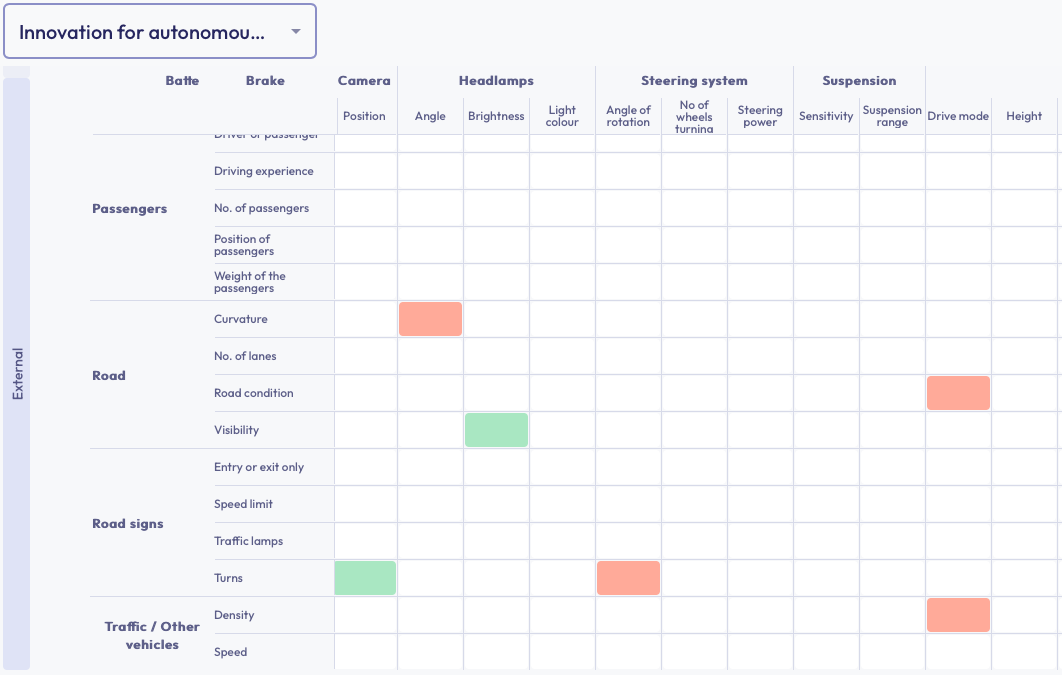Knowledge Exchange

Bringing Structure to Creativity and Innovation
In recent years, the word “innovation” has become somewhat of a buzzword in almost every industry imaginable. It has been used in so many different contexts that some say the term is starting to lose its meaning. But instead of abandoning it altogether, it might be more fruitful for businesses and organisations to define more precisely the process of creativity to truly reap the rewards of innovation.
Using the automotive industry as a case study, Pavan Kumar (Class of 2022) explains in this article how companies can systematise the process of innovation and create truly novel products and services.
How can automobile companies go about the innovation process? Now more than ever, the field is rife with opportunities for innovation. With electrification, better connectivity and AI, automobile technology has advanced by heaps and bounds. Most companies have resources to spend and the expertise to understand technology. A lot of money needs to be devoted to R&D. Is there an efficient and effective way to innovate? Where do the creative ideas come from?
If you think there can be no structure to innovate, I hope to change your mind by the end of this article. Let’s look at a few innovative features in the field of automobiles – automatic rain-sensing wipers, adaptive headlamps that prevent glare, cornering lamps, usage-based car insurance, auto-braking that prevents collision, and adaptive cruise control. Did you notice a common thread among these features?
Let’s find out by digging a bit deeper into a few of the examples mentioned above. Before we start, I want to emphasise that we will not be discussing the “how”, we are only discussing the “what” of these features. You don’t need to be an engineer to understand what comes next.
Automatic rain-sensing wipers:
The movement of windshield wipers depends on the rain. When it starts raining, the wipers turn on and they turn off when it stops raining. The wiper speed increases or decreases automatically based on the amount of rainfall. There is a relationship between wiper speed, an internal attribute (IA) that the automaker can control and rain, an external attribute (EA) which they don’t have any control over.
Cornering lamps:
Cornering lamps are additional lamps in the headlamp cluster that switch on when the vehicle approaches a turn (when the turn indicators are switched on). These lamps throw light onto the road the vehicle is turning into thus improving visibility before the driver makes the turn. The lamp switch function (IA) depends on the curvature of the road (EA).
User-based car insurance/ Pay as you drive:
It is unfair to charge the same premium to a driver who has barely taken their car out of the garage and to a driver who drives hundreds of kilometres a week. It’s also unfair to charge the same premium to a goody two shoes safe driver and a brainless monkey behind the wheel. Insurance companies came up with an insurance offering where the insurance premium (IA) depends on the usage of the car (EA). The data is retrieved by plugging a device into the car’s OBD-II port, which is similar to plugging a pen drive into the car’s onboard computer.
Adaptive Cruise Control (ACC):
Adaptive Cruise Control (ACC) is included in many recent car models. It can be activated after the vehicle reaches a certain speed. Once activated, the speed of the vehicle (IA) is actively matched with the speed of the vehicle in front (EA). If the vehicle in front accelerates, your vehicle accelerates too. If the vehicle ahead comes to a halt, so does your vehicle. All of this happens without human influence. This is an example of how AI is at play in our modern cars.
I could go on and explain other features too, but I hope you are already catching my drift (pun intended). If you haven’t realised already, there is an underlying pattern to all these features. There is an internal attribute (a variable which can be controlled by the user or manufacturer) which functions depends on an external attribute (a variable which is not in the control of subject entity). I’m not trying to convince you that all innovations follow this pattern. Many innovations follow other patterns too or probably don’t follow any.
Electric vehicles (EVs) were not a commercial success in the 90s. But the number of EV manufacturing OEMs has risen sharply in the last decade. Although autonomous vehicles are the next big thing in the automobile industry, we haven’t commercially achieved complete autonomy at scale and completely trusted machines with our lives yet. Nevertheless, exciting Advanced Driver Assistance Systems (ADAS) features are a key offering on a host of cars coming to market. ACC, automatic parking assist, collision avoidance system, emergency braking and lane-keeping assist are a few examples of such features which were made possible by advancement of AI.
So, what comes next? With advances in AI and more autonomous features expected, how can automobile companies innovate for the future? Can they look in the rear-view mirror for solutions? Does the past hold any answers? Is there a way they can devise a template to innovate for the future? In trying to answer these questions, I developed a few new ideas. Let me introduce them and explain my process.
To start with, I identified the components of an autonomous car and drew a matrix with all the internal and external attributes I could think of. The cells formed by attributes in the matrix could be potential ideas.

There are opportunities to create relationships between two internal attributes too, so I had them on both axes. There is absolutely no benefit to having external attributes on both axes. We cannot create relationships between two external attributes we cannot control. I listed the external attributes only in the rows. I went with the hypothesis that the cells might contain a few ideas that could turn into innovative features. Let me share a few ideas that I identified: vehicle speed could depend on speed limit signs on the road, the effort needed to steer could depend on the road terrain, the drive mode (like eco, regular, sport, snow, mud) of the vehicle could depend on the road condition and it could also depend on the density of traffic.
Here’s the irony – these ideas already exist! Upon doing some research, I realised that all these ideas I was excited about already exist as features and if they didn’t, they were already identified by some car maker. However, this meant that the process was working. So, I put the pedal to the metal and cruised ahead to identify a few more. Here are a few ideas that showed up as potential innovations:
Level of autonomy X road visibility: The cameras are almost useless in foggy conditions. A host of autonomous features depend on cameras for road visibility. These features could be turned off automatically in cases of foggy weather. It sounds like common sense so I’m assuming that it will happen anyway.
Level of autonomy X GPS location: For all autonomous features to work, we need optimum road conditions and infrastructure. For example, if the lane markings don’t exist, lane keep assist cannot work. Could the AV learn the road infrastructure from the GPS data and switch accordingly? If the AVs are driving in areas where network connectivity is unstable, maybe road signs that support AVs can help (road signs can be captured by the camera). There seems to be a lot of scope for changes in city planning and road construction as a result of advances in automobile technology.
Headlamp brightness X road visibility: The fog lamps could be eliminated and the brightness of the primary headlamp could be regulated based on visibility on the road.
AV movement X movement of other vehicles on the road: Enable swarm behaviour to make way for ambulances or emergency vehicles. On the highway, if the AV detects an ambulance, the AVs within a certain range could communicate among themselves to make way for the ambulance irrespective of how the other regular vehicles behave. AVs are equipped with sensors and cameras to detect ambulances or any emergency vehicles as long as they have a sign on them.
There are a few other ideas that I could think of, but I believe I’ve made my case. There’s a high chance that these ideas might exist too which shows that this process works. If I, an individual with little knowledge about autonomous driving could employ the template and ideate, I wonder what results might come out of experts using the same process. Also, the template of attribute dependency is not something I discovered. It is one of the templates of Systematic Inventive Thinking, a framework or an approach to creativity and innovation. I merely found a connection and applied it. The tool I used to create the matrix is Omnivati. The template works on products of all kinds as long as we can understand and accurately identify the internal and external attributes. The quality of ideas depends on the attributes identified and the people involved in the ideation process. It helps to have diversity and expertise in the room.
I hope this article will help you come up with new ideas and see innovation not just as an empty buzzword but a structured process that can be done by anyone. Feel free to reach out to me via LinkedIn if you would like to share your thoughts or have further discussions on this systematic approach to creativity.









